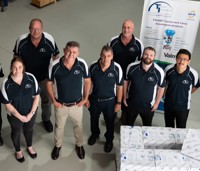Valmet to expand the flow control Channel Partner Network in Oceania
To continue strengthening customer support in Australia and the nearby regions, Valmet is pleased to welcome Territory Instruments to its flow control channel partner community. Territory Instruments (TI) is a well-known enterprise specializing in the sales, service, and calibration of industrial products, particularly in the realm of process instrumentation and test equipment.
Flow control







